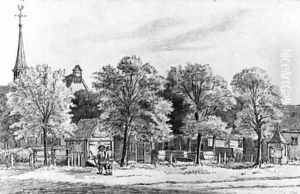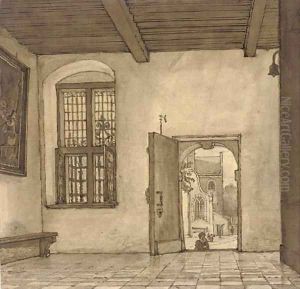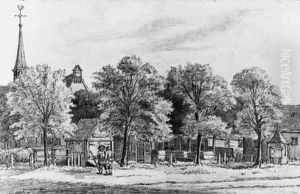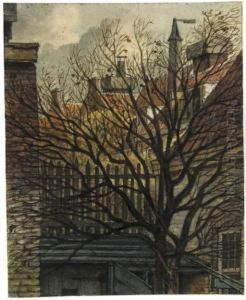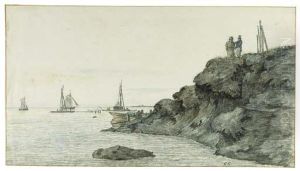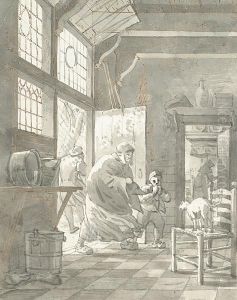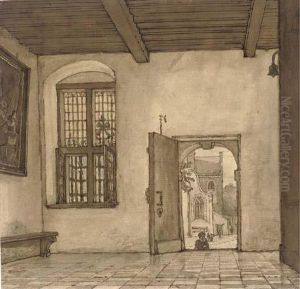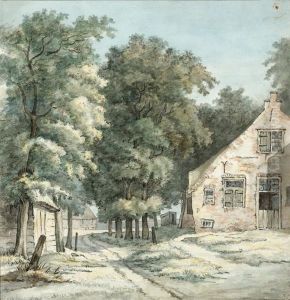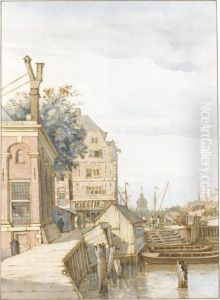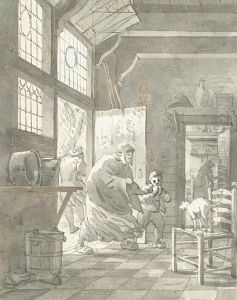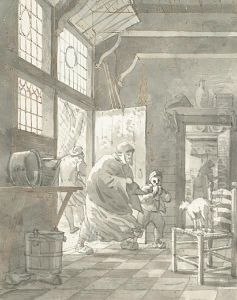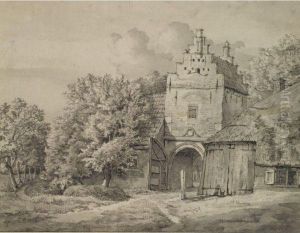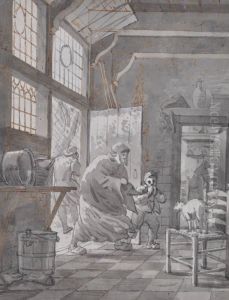Gerrit Lamberts Paintings
Gerrit Lamberts was a Dutch artist and draftsman, born in Amsterdam in 1776. He is best known for his detailed architectural drawings and cityscapes, which provide a valuable historical record of the Netherlands during the 19th century. Lamberts' work is characterized by its precision and attention to detail, often capturing the intricate facades of buildings and the bustling life of the streets with remarkable accuracy.
Lamberts' early life is not well-documented, but it is known that he developed an interest in drawing and painting at a young age. Despite the lack of formal training in his early years, Lamberts honed his skills through practice and observation. He became particularly fascinated with the urban landscape of Amsterdam, which served as the primary subject of his artistic endeavors throughout his career.
During his lifetime, Lamberts contributed significantly to the preservation of Dutch cultural heritage through his artwork. His drawings and watercolors serve as a historical archive, offering insights into the architectural styles and urban planning of the time. Lamberts was meticulous in his approach, often including people and everyday scenes in his compositions to add life and context to the static architecture.
Lamberts' contributions were not limited to his own artistic creations. He also engaged in the collection of historical documents and art, including maps and prints, which further demonstrated his deep interest in the history and visual representation of his homeland.
Despite his dedication and the quality of his work, Gerrit Lamberts remained relatively unknown during his lifetime and did not receive the recognition he deserved until after his death in 1850. Today, his works are held in various collections and museums, where they are appreciated not only for their artistic merit but also for their historical significance. Lamberts' legacy lives on as a testament to the importance of documenting our surroundings and preserving the cultural heritage for future generations.
